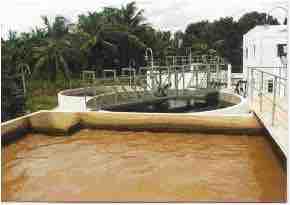Our planet is contaminated with many chemicals that are toxic to living organisms. These chemicals are products or byproducts from different industries. Examples of such contaminants are polychlorinated biphenyls (PCBs), polyaromatic hydrocarbons (PAHs), chloroethenes, and pharmaceutical substances. These pollutants can cause dangerous contamination of the air, soil, and water. Microorganisms play a major role in eliminating such pollutants from the environment.
Bioremediation of Soil
Soil is a major reservoir of microorganisms with each gram containing about one billion microbes. Microbes are used for bioremediation in situ of contaminated soil. Microorganisms that can remove contaminants from the environment are called bioremediators. Contaminations are most often caused by a mixture of pollutants and the best strategy for cleanup is to use a cocktail of different species since each one of them will be optimized for the degradation of a specific toxic compound.
The microbe activity is usually monitored on such sites to ensure optimal conditions for bacterial growth and hence degradation. Decomposition of the toxic substances can be performed both in the presence (aerobically) and absence (anaerobically) of oxygen. The limiting factor for bioremediaton in soils is the bioavailability of the contaminant agents.
Bioremediation of Water
The treatment of sewage water is a critical process to assure the purification of wastewater that will prevent chemical and microbiological pollution of the environment, especially for the drinking water supplies . An important part of this process is the biological step which involves the activity of living organisms to clean the water from organic matter. This happens in the secondary step of sewage purification. Microorganisms substantially lessen the concentration of nutrients which if released in the environment can lead to undesirable overgrowth of microorganisms and algae.

Sewage Treatment Plant
Wastewater treatment plants are critical in lowering the levels of pollutants in the environment.
They also have the potential to clean the water from toxic components. The degradation is performed in the anaerobic, aerobic, and composting steps. Anaerobic digestion by bacteria is allowed to procede for almost two weeks to guarantee enough time to complete the process. During this time, the organic matter undergoes four different enzymatic transformations: hydrolysis, acidogenesis, acetogenesis and methanogenesis. The final products are water, carbon dioxide, and methane. In the aerobic step, oxygen is added into the system and the organic matter is converted to carbon dioxide. In the composting step, additional carbon sources are added to aid the final steps of degradation.
In recent years, advances in genomics, proteomics, and bioinformatics studies of environmental microorganisms have revealed a tremendous potential in metabolic pathways.
Such studies showed that Burkholderia xenovorans LB400 and Rhodococcus sp. strain RHA1, have evolved pathways to degrade aromatic compounds, which are some of the toughest contaminants to eliminate. The bacteria have genes coding for deoxygenases to open the aromatic ring structures of these chemicals.
Hydrocarbons and their derivatives were long believed to be degraded only in the presence of oxygen. This would often lead to oxygen depletion in environments heavily polluted with oil. Studies in recent years have proven that there are numerous anaerobic bacterial species capable of decomposing this group of pollutants. A common feature among these bacteria is that they possess reductive dehalogenases.
Bacterial species are assisted in the process of degradation by fungi (e.g., Aspergillus sp.), protozoa, and representatives of Archaea. The primary role of fungi is in secreting numerous extracellular enzymes that break down complex molecules into their components and make them readily available to the bacterial community.